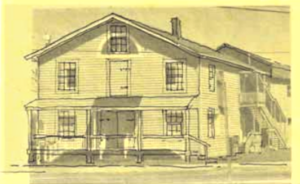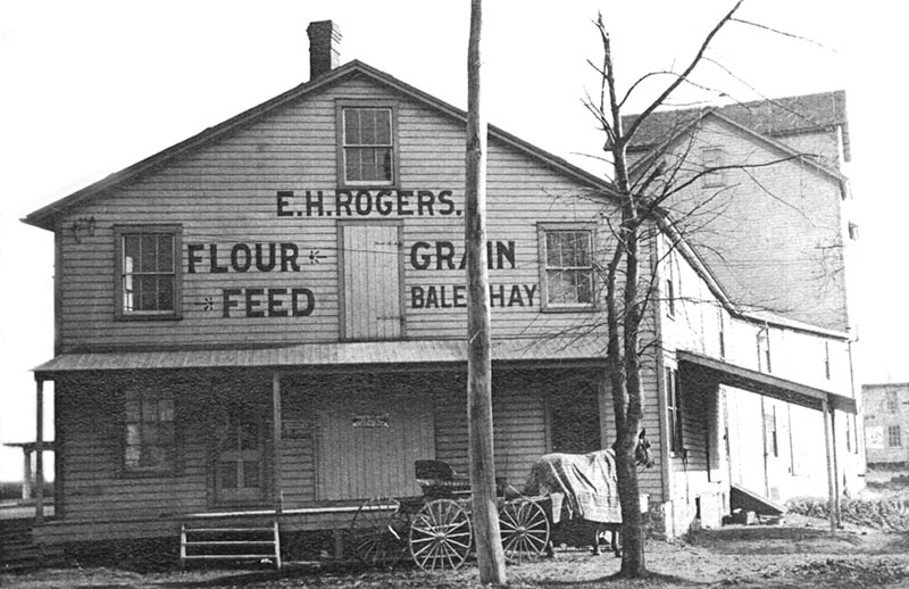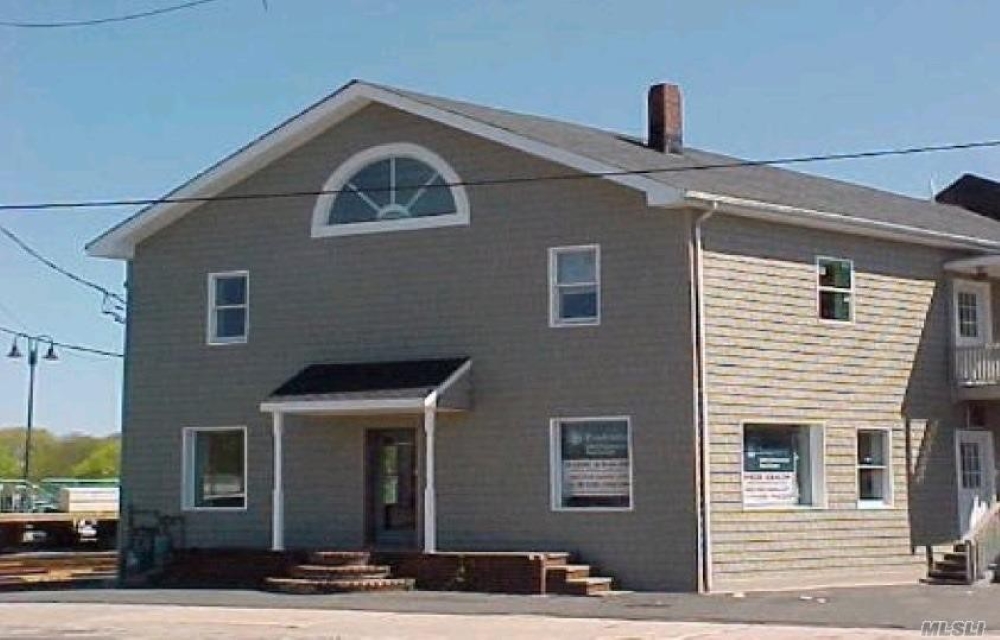ACTION ALERT!
Attention residents of Brookhaven Town! Join us in supporting the Rogers-Remz Grain & Feed Building at 101 Main Street/Route 112, Port Jefferson Station, NY. If you live in the Town of Brookhaven, please contact your local elected officials to let them know you support town landmark designation for the Rogers-Remz Grain & Feed Building and other overlooked historic properties in Port Jefferson Station!
Why is the Rogers-Remz Grain & Feed Building historically significant?

This building played a vital role in the area’s once expansive farming industry during the late-19th and mid-20th centuries. The arrival of the railroad in 1873 brought new innovations in the storage and shipment of local agricultural products, which are clearly reflected in the Rogers-Remz Grain & Feed Building. At the time, Port Jefferson Station was known as Echo, in honor of a celebrated racehorse named “Echo” from a local stable. Although the old grain elevator was removed in mid-20th century, much of the building’s original timber frame and other features survive providing an excellent opportunity for rehabilitation.
Why is the Rogers-Remz Grain & Feed Building endangered?
This site and other undesignated historic properties in Port Jefferson Station (especially along the commercial corridor of Main Street/Route112) are threatened by demolition and urban-renewal. The building also suffers from some insensitive alterations that partly obscure its strong ties to local and regional history.
These threats are exacerbated by an urgent need for accurate up-to-date survey data identifying all historic and cultural resources in Port Jefferson Station, such as the nearby William Tooker House. Without such survey data, municipal officials lack adequate information to sufficiently identify and protect the community’s significant as-yet undesignated historic resources from demolition and urban renewal. Moreover, potentially eligible owners of undesignated historic properties in Port Jefferson Station are missing out on opportunities for tax credits and other financial incentives made possible by listing on the National/State Registers of Historic Places.

How can the Rogers-Remz Grain & Feed Building be preserved?
Preservation Long Island joins local community members, including the Port Jefferson Station/Terryville Chamber of Commerce and the Greater Port Jefferson Historical Society, in advocating Brookhaven Town officials to pursue the following actions for preserving this site:
• Recognize the Rogers-Remz Grain & Feed Building as a designated landmark of Brookhaven Town.
• Sponsor a new survey, in partnership with the Village of Port Jefferson, to identify and designate all historic resources and historic districts, north and south of the railroad, in the community of Port Jefferson Station.
• Incorporate recognition and rehabilitation of Port Jefferson Station’s long-overlooked historic and cultural resources in downtown revitalization plans. For example, Port Jefferson Station has great potential for listing on the National/State Register as a downtown historic district, which would open possibilities for tax credits and other financial incentives.
• Seek additional guidance for preservation planning and decision-making from experts at New York State Historic Preservation Office’s Technical Preservation Services Bureau.
Preservation Long Island’s Endangered Historic Places Program is made possible in part by a grant from the New York State Council on the Arts with the support of Governor Andrew M. Cuomo and the New York State Legislature.







